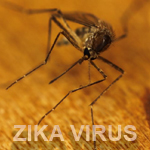Zika threat continues to rise
 With the warm weather approaching, many people are thinking of summer vacations and shedding the winter clothes. However, with the changing seasons comes the threat of bugs and the viruses they carry. As we previously discussed on our blog, Zika Virus is the threat of the year and does not appear to be going anywhere due to the lack of knowledge surrounding the virus.
With the warm weather approaching, many people are thinking of summer vacations and shedding the winter clothes. However, with the changing seasons comes the threat of bugs and the viruses they carry. As we previously discussed on our blog, Zika Virus is the threat of the year and does not appear to be going anywhere due to the lack of knowledge surrounding the virus.
According to the CDC, there are currently 358 confirmed cases of Zika Virus in the United States, but it’s important to note that 351 of these are from those who have traveled to other countries where the virus lives, and only 7 are due to sexual transmission. The biggest concern for the CDC is the transmission of the disease from one person to another. Women who have been in an infected area are told to wait 8 weeks before trying to conceive; while men are told to wait 6 months, as the virus has been noted to last even longer in their bodies. The transmission of the disease between partners and to an unborn child is a significant scare due to the lack of preparation against the disease.
The Obama administration is pushing for emergency funding to combat the threat, while Congress refuses and suggests using the leftover Ebola-scare funds. The issue with the disease and its prevention is that it is carried by only certain types of mosquitos and it is hard to pinpoint where these bugs are traveling. While many mosquito-borne diseases can be sprayed for, the accuracy of Zika Virus in bugs is more of an unknown. States that are on the Gulf Coast have begun preparations with vector control programs (spraying), however those in the middle of the country do not seem to have any action plans set. The response to the threat is so minimal because there are many counties that simply do not have the funds in place.
With the insufficient response to the threat and with the warmer weather on its way, it is crucial to educate on the ways to prevent Zika from spreading. Bug spray, long-sleeved clothing, protected sex, and informed travel will help to prevent the spread of this disease.
(Please click here to see for the latest Safety Insight on Employer Liability related issues from my Gallagher colleagues, as all U.S. employers and those with international operations should monitor the situation and be prepared to respond to questions from employees and supervisors.)
About the Author
 Pete Reilly is an Area Executive Vice President at Gallagher and the Regional Director of the Healthcare Practice. He has extensive knowledge in healthcare systems, including hospitals, long-term care facilities, and medical practice groups of all sizes.
Pete Reilly is an Area Executive Vice President at Gallagher and the Regional Director of the Healthcare Practice. He has extensive knowledge in healthcare systems, including hospitals, long-term care facilities, and medical practice groups of all sizes.
617.692.0256 | Peter_Reilly@ajg.com | Connect with Pete on LinkedIn
Follow Pete @MedMalInsGuy
MORE POSTS BY PETE >
